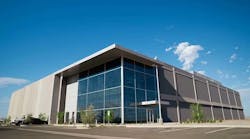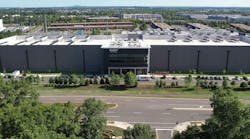Lincoln Rackhouse has acquired two data centers in Northern Virginia from Netrality Properties, entering one of the industry’s most active markets. The deal is part of a larger effort by Lincoln Rackhouse to build a national data center portfolio, primarily through acquisitions of existing properties.
In the Northern Virginia deal, Dallas-based Lincoln Rackhouse partnered with Freeman Group, an investment firm run by former LayerOne and DataBank co-founder Brandon Freeman. The two data centers (1807 Michael Faraday Court and 251 Exchange Place) were operated for many years by Digital Realty, which put them up for sale last year as part of a four-building portfolio. Netrality, which operates carrier hotels in major cities, bought the portfolio earlier this month.
“Netrality acquired the whole portfolio, but their business model is geared around network-centric properties in the central business district of cities,” said Ryan Sullivan, Director at Lincoln Rackhouse. “These two buildings are smaller assets with a value-add story.”
Lincoln Rackhouse was looking for buildings in Northern Virginia, and arranged to acquire the two properties from Netrality.
Opportunity in a Hot Market
“The ability to enter the hottest data center market in the world with existing cash flow and immediate capacity available for lease was very appealing to us,” said Sullivan. “The market saw absorption of over 70 MW of data center capacity in the first half of this year, and these properties present a unique opportunity for operators, providers and end users to enter or expand in the market right away, while other large data center developers and providers scramble to deliver new capacity as fast as they can to keep up with demand.”
Here’s an overview of the properties:
- 251 Exchange Place in Herndon is a 70,000 square foot powered shell property with 5 megawatts of power available. The building was an active data center for Level 3, which recently vacated when its lease ended and it opted to consolidate operations into another facility ion the area. Lincoln can offer the property as powered shell,o build-to-suit or turn-key data center, depending on the requirement.
- 1807 Michael Faraday Court in Reston is an operating colocation data center with approximately 1 megawatt of critical IT load on 11,000 square feet of raised floor. Lincoln Rackhouse will market the partially-occupied facility as turn-key data center space, leasing colocation suites.
The expansion into Northern Virginia is part of a larger opportunity for Lincoln Rackhouse in the data center sector. The company provides acquisition, property management and tenant representation services for data center clients. It also has partnered with T5 Data Centers to develop and market data centers in Dallas and Briarcliff Manor, N.Y. (about 30 miles north of Manhattan).
Opportunity in NoVa
Lincoln Rackhouse currently owns and operates data centers in Charlotte and the Boston area. The expansion into Northern Virginia reflects an interest in building a broader portfolio of data centers.
“Historically we’ve been more transactional in our approach, with traditional real estate service offerings,” said Sullivan. “We’re trying to grow our portfolio across the country, and this deal fit our profile.”
Lincoln Rackhouse is a unit of Lincoln Property Company, a developer and real estate service provider that manages more than $60 billion in assets in 100 markets in the U.S. and Europe. That backing means Lincoln Rackhouse has the means to pursue data center acquisitions that fit its profile.
“Lincoln Property is a huge developer with a long history in commercial development,” said Sullivan. “We have the ability to roll that capability into our data center platform.”
Sullivan is particularly interested in properties that have an existing tenant that is only filling part of the facility, creating the potential for a sale/leaseback that conbines rental income and the “value-add” from developing the unused space and filling it with data center tenants.
“The value-add opportunity is the primary play for us,” said Sullivan. “The goal is to pick up several of these opportunities over the next few years. We’re very active and very opportunistic, but it’s got to be the right deal.”
Lincoln Rackhouse may eventually consider greenfield data center projects, but won’t build on a speculative basis. “We’re definitely a good option for build-to-suit,” said Sullivan, who said the build-to-suit option could work with either an end user of service provider. “We’re a real estate investor. We’ll never get into colocation or providing data center services.”






